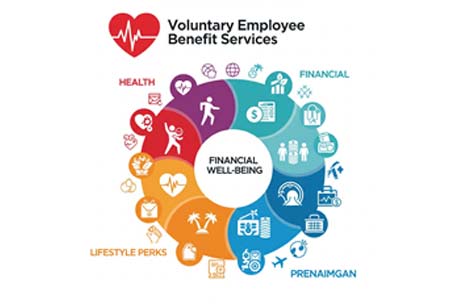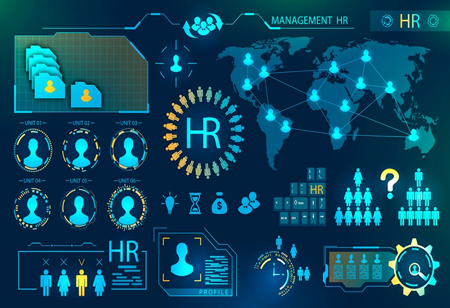THANK YOU FOR SUBSCRIBING
Be first to read the latest tech news, Industry Leader's Insights, and CIO interviews of medium and large enterprises exclusively from Hrtech Outlook
THANK YOU FOR SUBSCRIBING

By
HR Tech Outlook | Monday, November 17, 2025
Stay ahead of the industry with exclusive feature stories on the top companies, expert insights and the latest news delivered straight to your inbox. Subscribe today.
Voluntary employee benefit (VEB) services are gaining prominence as organizations look beyond core employee offerings to attract, engage, and retain talent. Top-tier candidates increasingly expect personalized benefits, such as supplemental health coverage, financial wellness programs, and flexible lifestyle perks, tailored to their unique needs. Employers respond by curating voluntary benefit packages, giving workers choices beyond standard healthcare, retirement, and paid time off. The shift supports broader strategic goals, such as enhancing the employee experience, boosting productivity, and aligning workforce support with brand values.
AI and predictive analytics enable employers to analyze benefit utilization patterns, identify preferred offerings, and forecast renewal needs. Embedded decision-support tools, such as virtual assistants and benefits education modules, guide employees through complex decisions by asking relevant questions and making personalized recommendations. Mobile-friendly dashboards and apps enable self-service enrollment, instant quoting, and real-time support, which is particularly appreciated by younger workers accustomed to digital-first experiences.
Trends Shaping Employee Wellness and Engagement
Several trends are shaping the future of voluntary benefits, including customization, integration with wellness programs, mobile access, and flexible delivery. Employers are increasingly offering à la carte benefit menus, which include pet insurance, student debt assistance, identity protection, fertility services, and cybersecurity protection, allowing employees to choose options tailored to their lifestyle, health, and financial needs. Companies are bundling voluntary benefits with wellness initiatives, such as mental health services, telemedicine, gym subsidies, and nutrition counseling, signaling a holistic approach to employee wellbeing.
Mobile-first experiences covering benefit selection, claims submission, and reward tracking drive engagement and reduce administrative friction. The rise of ‘flex credits’ is attracting attention: employers provide employees with a set amount of benefit credits to manage, enabling a personalized benefit mix across various categories. Data-driven integration strengthens outcomes: platforms that merge benefit data with performance, attendance, and engagement systems create insights into the role of benefits in reducing absenteeism, improving morale, and boosting retention.
Organizations must implement robust data governance frameworks that ensure consent, data encryption, limited access, and compliance with relevant data protection and privacy laws. Adopting privacy-by-design practices, such as anonymized analytics, consent workflows, and precise opt-in mechanisms, builds trust. High voluntary premiums can discourage participation if the employer does not provide sufficient subsidies. Employers can use budget caps or flex-credit budgets, allowing employees tailored coverage that fits their needs. They can negotiate with carriers for volume pricing or tiered discounts and pilot new offerings selectively before rolling them out widely.
Applications Across Industries and Organizational Impact
Voluntary employee benefit services span numerous industries, including manufacturing and retail, as well as finance, healthcare, and technology. In mission-critical sectors like manufacturing and utilities, voluntary benefits provide added protection, including accidental death and dismemberment (AD&D) coverage, critical illness coverage, and hospital indemnity, which safeguards employees in high-risk situations. Retailers, hospitality businesses, and gig economy employers utilize portable benefits, such as financial planning tools, legal aid, and short-term disability, to enhance workforce stability, particularly among part-time or hourly staff.
The services benefit employees by giving them agency in curating a personalized benefits portfolio, which increases satisfaction and engagement. Employers and brokers benefit from increased employee loyalty, reduced turnover, and healthier, more engaged workforces. Data and technology integration make employer offerings more efficient, transparent, and cost-effective, automating administration, reducing manual errors, and streamlining enrollment and enrollment-tracking processes. Benefits consultants and insurance brokers enhance their value proposition by providing digital platforms that incorporate analytics, compliance workflows, employee communications, and open enrollment support.
Payers and carriers for voluntary products expand distribution through employer-sponsored channels while obtaining behavioral insights essential for product innovation and pricing. Regulators and compliance teams see improvements: efficient workflows and automated proof of coverage help organizations comply with country-specific regulations. APIs and orchestration layers will enable seamless integration with HRIS systems, payroll, EAP, LMS, and financial wellness platforms, supporting a unified employee experience.
Streamlining Benefits Management by Overcoming Challenges
Organizations face several challenges. Complexity and enrollment analytics become barriers as benefit menus expand. To avoid overwhelm during open enrollment, employers need intuitive technology with guided onboarding, dynamic FAQs, simple visuals, and quick calculators. Periodic check-in reminders and digital assistants help employees modify coverage in response to life changes. From the employer’s viewpoint, managing vendor coordination, carrier integrations, and compliance demands a modern platform that consolidates transactions, automates subsidies, and provides holistic reporting. Centralized portals and third-party administrators can streamline this complexity.
Engagement is another challenge. Low participation rates in voluntary plans can reduce the impact and effectiveness of participation-based benefits, such as wellness programs. Educating employees about benefits such as accidental death and dismemberment (AD&D), wellness discounts, identity theft protection, and pet insurance is helpful. Employers can utilize targeted campaigns, educational webinars, testimonial-based storytelling, and personalized nudges to enhance their recruitment efforts. Gamification rewards for benefit usage, health activities, or financial literacy boost engagement and cultural embedment.
In industries with lower digital literacy, personalized workshops, in-person clinics, and paper-based support continue to be vital. The voluntary employee benefit service market will increasingly rely on data and personalization. Sustainability and social impact will drive the inclusion of philanthropic benefits, family leave solutions, and ethical wellness programs aligned with environmental and social goals. Technologies such as conversational AI, benefits chatbots, and live virtual service assistants will address questions, guide employees through complex decisions, and escalate to human expertise when needed.



